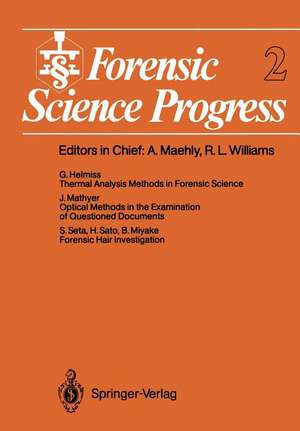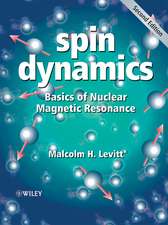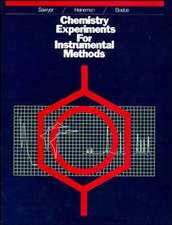Forensic Science Progress: Forensic Science Progress, cartea 2
Contribuţii de Günter Hellmiss, Jacques Mathyer, Buntaro Miyake, Hajime Sato, Sueshige Setaen Limba Engleză Paperback – 19 noi 2011
Preț: 636.45 lei
Preț vechi: 748.76 lei
-15% Nou
Puncte Express: 955
Preț estimativ în valută:
121.79€ • 127.47$ • 101.36£
121.79€ • 127.47$ • 101.36£
Carte tipărită la comandă
Livrare economică 31 martie-14 aprilie
Preluare comenzi: 021 569.72.76
Specificații
ISBN-13: 9783642694059
ISBN-10: 3642694055
Pagini: 188
Ilustrații: IX, 173 p.
Dimensiuni: 170 x 244 x 10 mm
Greutate: 0.31 kg
Ediția:Softcover reprint of the original 1st ed. 1988
Editura: Springer Berlin, Heidelberg
Colecția Springer
Seria Forensic Science Progress
Locul publicării:Berlin, Heidelberg, Germany
ISBN-10: 3642694055
Pagini: 188
Ilustrații: IX, 173 p.
Dimensiuni: 170 x 244 x 10 mm
Greutate: 0.31 kg
Ediția:Softcover reprint of the original 1st ed. 1988
Editura: Springer Berlin, Heidelberg
Colecția Springer
Seria Forensic Science Progress
Locul publicării:Berlin, Heidelberg, Germany
Public țintă
ResearchCuprins
Contents/Information: 'Thermal Analysis Methods in Forensic Science' by G. Hellmiss: This contribution first explains the basics of the measuring process and the type of information obtained by the major TA methods, i.e. differential thermal analysis (DTA)/differential scanning calorimetry (DSC), thermogravimetry (TG), thermomechanical analysis (TMA). The next subject covers forensic science applications of TA. 'Optical Methods in the Examination of Questioned Documents' by J. Mathyer: Optical methods of examination include observations made by the naked eye, and microscopic examination with illumination in the visible or invisible range of the spectrum. 'Forensic Hair Investigation' by S. Seta, H. Sato and B. Miyake: The ultimate purpose of forensic hair comparison is to state whether a crime scene hair is of victim origin or of suspect origin. A combination of morphological and analytical data of hair samples, including hair protein and hair root and isoenzyme analysis leads to the enhancement of identification probability.














